Estimated reading time: 9 minutes
Canning food is a great way to take advantage of sales at the grocery store, a windfall from a neighbor, or your own garden. Wasting food is just not an option, especially these days.
Using a pressure canner to ‘put up’ things like vegetables, meats and broth is inexpensive and ensures you have a stockpile of food for days when things might not be so bountiful.
Canning food is a tradition that has been passed down for generations. There are countless rules and ideas, but ultimately, it comes down to food safety. A pressure canner is an absolute must for everything except fruit. Fruit can be preserved in a water bath canner.
Choosing to preserve your meat with a shelf-safe method means you don’t have to worry about the power going out. That’s the goal. To have shelf-stable food you can eat when the power goes out.
How many times have people loaded their freezers only to have the power go out or the freezer fail? All of the food is spoiled. Canning food ensures your food is safe, and you free up your freezer space.
The following list will cover every food that can be processed in a pressure canner and put on the shelf in your food storage.
Want to save this post for later? Click Here to Pin It On Pinterest!
Meat
Depending on where you grew up, you might scoff and pass right over the idea of canning meat. It can be done. You can preserve wild game, beef and pork.
There are a few different recipes you can apply. It all depends on personal preference. You can do a simple brine solution or add a few additional flavors with things like peppers and onions. The key is to cut the meat into chunks or strips.
The heat needs to be able to get through the liquid in the jar to properly preserve the meat. Check out this site, The Prairie Homestead for a good, basic canning method.
- Bear
- Beef lengua (tongue)
- Beef meatballs
- Canada goose
- Chicken
- Elk, moose, caribou
- Giblets
- Ground beef
- Ground pork
- Lamb quarters
- Pulled pork
- Quail and other game birds
- Rabbit
- Sausage
- Short ribs
- Squirrel
- Stew Meat
- Turkey
- Turtle
- Venison
Fish
Yes, you read that right. At first blush, you might turn up your nose, but think about sardines, tuna and so on. The key to remember when canning fish is a little goes a long way.
You don’t need quart jars. In fact, the general rule is pint-size jars only. Smaller is better. You can preserve just about any fish you pull from the water. Found a great spot for trout but don’t want to freeze it? Can it. Fresh fish like steelhead, blue and shad can be canned. Don’t forget salmon.
If you prefer smoked fish, you can smoke it then can for long-term preservation. Always follow guides. Healthy Canning has a long list for you to peruse.
Seafood
Again, you might think canning stuff you pull from the ocean would be off limits, but it isn’t. Oysters, clams and even some crab varieties can be safely canned. Shrimp is also an option.
If you happen to live near the sea and have a plethora of seafood, you don’t have to catch and freeze. Ideally, any seafood you choose to pressure can should be fresh before the canning process.
The seafood will be stored in a brine that you can adjust based on your taste preference. Mother Earth News has a quick and easy guide to canning clams.
Stocks/Broths
Using meat bones to make broth or stock is a common practice. It’s easy to do, and you get the satisfaction of knowing you are using ever bit of the meat you have either hunted or bought at the store.
Poultry, beef and pork bones all have more to give. You can season the broth according to your favorite recipes. The House and Homestead has a good tutorial.
- Beef broth
- Bone broth
- Chicken broth
- Fish stock
- Organ meat stock
- Pheasant stock
- Pork stock
- Shrimp stock
- Turkey broth
Dried Beans
If you are thinking ahead to a time of no power and limited fuel for cooking, the hundred pounds of beans you have might be a little difficult to cook. You can take those dried beans, cook them and then can them.
Making soups, chilis and stews with canned beans is quicker, easier and will require less fuel and precious water that might be in short supply. You can put up pinto, navy, black beans and so on. Simply Canning has an easy recipe for cooking and canning your beans.
Chili
A good chili can fill the belly and take away all your worries. There are so, so many chili varieties. Make it spicy or make it mild. You can use meat or go with a vegetarian style.
Making chili is a competitive sport for many. If things go sideways, you’re going to want your favorite feel-good chili. If you don’t have your own recipe, we’ll link to a few below.
Vegetables
People have been canning vegetables from their gardens for centuries. A pressure canner makes it safer to store vegetables for years. In some cases, much longer.
Things like green beans, peas and corn are super easy to grow in a backyard garden or to pick up in bulk at a farmer’s market. Take advantage of the growing season and load up at every opportunity.
If someone gives you a bag of veggies from their garden, don’t turn it away! You don’t have to eat green beans every night for a week to get through it. Can them. Y
ou can choose to can with brine or plain water to be a little healthier. Healthy Canning has some information about canning veggies.
Root Vegetables
Root veggies like carrots, beets, and onions are processed similarly to their above-ground counterparts. And yes, you can pressure can potatoes. Potatoes got a bad rap some time ago. They are able to be safely canned and put on the shelf along with other root crops.
There is a process called blanching that is important to killing all bacteria on the food before you put it into a jar to process. Follow the instructions for canning your root crops can be found at Timber Creek Farmer.
Stews
A good hearty stew on a cold day is exactly what the body needs to be warmed up from the inside out. It fills the belly and is nutritious. Think about a post-SHTF world. After a hard day’s work, you’ll want something solid.
There are probably a thousand different recipes for stew. It all comes down to personal preference. If you already have a favorite recipe, it can be canned. Creative Homemaking has amazing pictures and instructions to walk you through home canning stew. Check out some of the stew recipes.
Soups
Canning soups might seem pretty straightforward, but there are some tweaks you’ll need to make to your recipes to ensure they will last for a good long while on your shelf. The key is to only use high-quality ingredients.
Everything will need to be precooked. You can’t mix up a soup and can it. The meat needs to be cooked. If you’re using beans in your recipe, you’ll need to cook them as well. Simply Canning outlines a few more rules for canning your favorite soup.
- Cabbage beef soup
- Carrot and ginger soup
- Chicken Mexican soup
- Chicken soup
- Clam chowder
- Cream of chicken
- Cream of mushroom
- Creamy potato soup
- Split pea and ham
- Tomato soup
- Tuscan minestrone soup
- Vegetable soup
Tomato Sauce/Pasta Sauce/Tomato
Tomato sauce is a versatile ingredient that can be used in all kinds of recipes. While some people will say water bath canning is safe for acidic tomatoes, it’s not always the best option.
The rule of thumb with all canned food is this; when in doubt, throw it out. You don’t want to risk making you and your family seriously ill or worse with food that has not been properly canned and stored.
When it comes to tomato sauce and pasta sauces in general, you have many, many choices for flavors. Experiment with some different recipes. Don’t be afraid to can a variety of recipes. The more, the better. Check out Practical Self Reliance for some tips.
Salsas
There is nothing like the taste of salsa made from ingredients you’ve grown in your own garden. You get to choose the heat of your salsa based on your taste buds. You have full control over quality as well.
The trick to safely canning salsa is adding acid. That can be lemon or lime or even vinegar. The acidity is what makes it safe to preserve. Some people prefer to use a water bath canning method. It will depend on your ingredients.
Only use approved pressure canning salsa recipes. The PennState Extension site has some tips on how to tweak your recipe for the best results.
Condiments
Sometimes, it’s not the food you eat but the way you dress it up that makes it amazing. Think of life after a total breakdown. You might have the basics, like rice and beans and some canned meat. But if you’re eating the same thing day in and day out, you’ll want to have some extra flavor to make it palatable.
This is especially true for kids. You can make your own condiments to suit your family’s tastes. Some things, like barbecue sauce, can be processed in a water bath. Check out some of the recipes.
- Barbecue sauce
- Barbecue sauce (another good one)
- Bolognaise
- Ketchup
- Tahini sauce
Final Thoughts
Pressure canning is a money-saving way to build up your stockpile without relying on commercially canned food that you have no control over.
There are a few things that simply should not be canned. Things like lettuce, pasta and rice are not going to hold up to the process. Dairy products are also not an option. Eggplant, cabbage and artichoke can be pickled and then stored.
Always follow safety guidelines and recommended processing times. Never attempt to preserve food that isn’t of the best quality. Vegetables should be fresh and free of mold. Meats should be fresh and have no questionable odors.
The preservation process only works if the bacteria that naturally occurs in everything is mitigated and not allowed to grow and thrive while the canned food sits on your shelf.
Like this post? Don't Forget to Pin It On Pinterest!
You May Also Like:





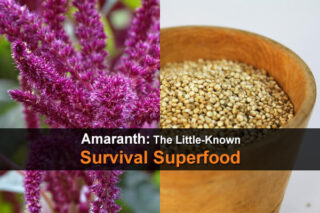
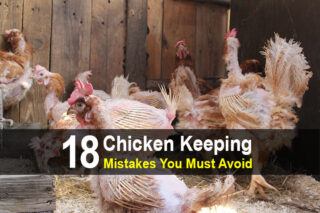
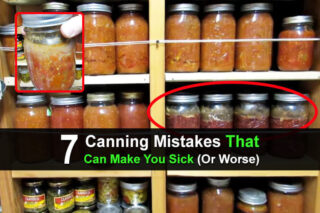
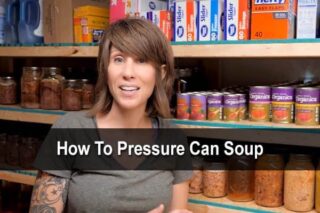
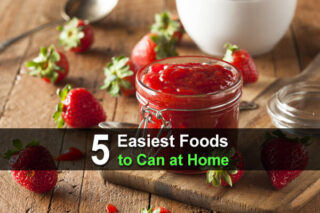
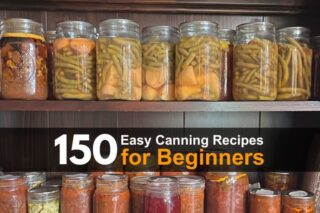

For further information for the curious, foods not regarded as safe for home processing that are canned comercially require an autoclave to safely process.
Small autoclaves are available, but I have no idea of the price point.